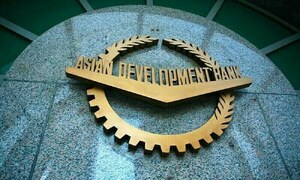Pakistan''s financing gap would increase to $1.771 billion in the second quarter (October-December) subsequent to the government decision not to go for divestment of OGDCL shares in the capital market. Pakistan''s gross financing requirements for the second quarter of the current fiscal year were projected by the International Monetary Fund (IMF) at $2.459 billion in the 27 June 2014 report prepared by Fund staff for the Executive Board''s consideration following successful conclusion of the third review.
The available financing was projected at $1.459 billion which included Foreign Direct Investment (FDI) as well as privatisation/divestment receipts. The remaining financing gap of $1.001 billion was projected to be bridged through the fourth $557 million tranche release from the IMF in the second quarter and $444 million other loans and grants.
For the second quarter, the government committed to offering 311 million OGDCL shares to international and domestic institutional investors to mobilise $770 million. In addition, $1 billion Sukuk bonds were to be offered during the second quarter.
The projected financing requirement for October-December of $2.45 billion would increase with the postponement of sale of OGDCL shares. The IMF fourth and fifth tranches, if released, would generate $1.1 billion which would be insufficient given the shortfall. However, if Sukuk bonds of $1 billion are offered and FDI from China amounting to $1 billion is invested in the country, the financing requirements would be met.
The IMF press release on its website dated 8 November 2014 states that: The mission reached staff-level understandings with the authorities on a Memorandum of Economic and Financial Policies which, upon the management''s approval, will be considered by the IMF Executive Board in December to conclude the fourth and fifth reviews. Upon Board approval, SDR 720 million (about $1.1 billion) will be made available to Pakistan. However, the release specifies that the authorities are committed to taking the necessary corrective actions for missed targets, and with these actions, they will be on track to meet their objectives for end-December. The implication analysts maintain is that the agreed time-bound conditions must be met prior to fourth and fifth tranche release. An official of the Finance Ministry on condition of anonymity told Business Recorder that the ongoing sit-ins have proved a blessing in disguise for the economic managers as the rupee depreciation would positively impact exports. However, he acknowledged that high non-oil imports is a serious concern as it is exerting sustained pressure on the balance of payment and current account.
BR100
15,085
Increased By
112.5 (0.75%)
BR30
44,012
Increased By
987.7 (2.3%)
KSE100
148,618
Increased By
1274.3 (0.86%)
KSE30
45,248
Increased By
370.7 (0.83%)





















Comments
Comments are closed.